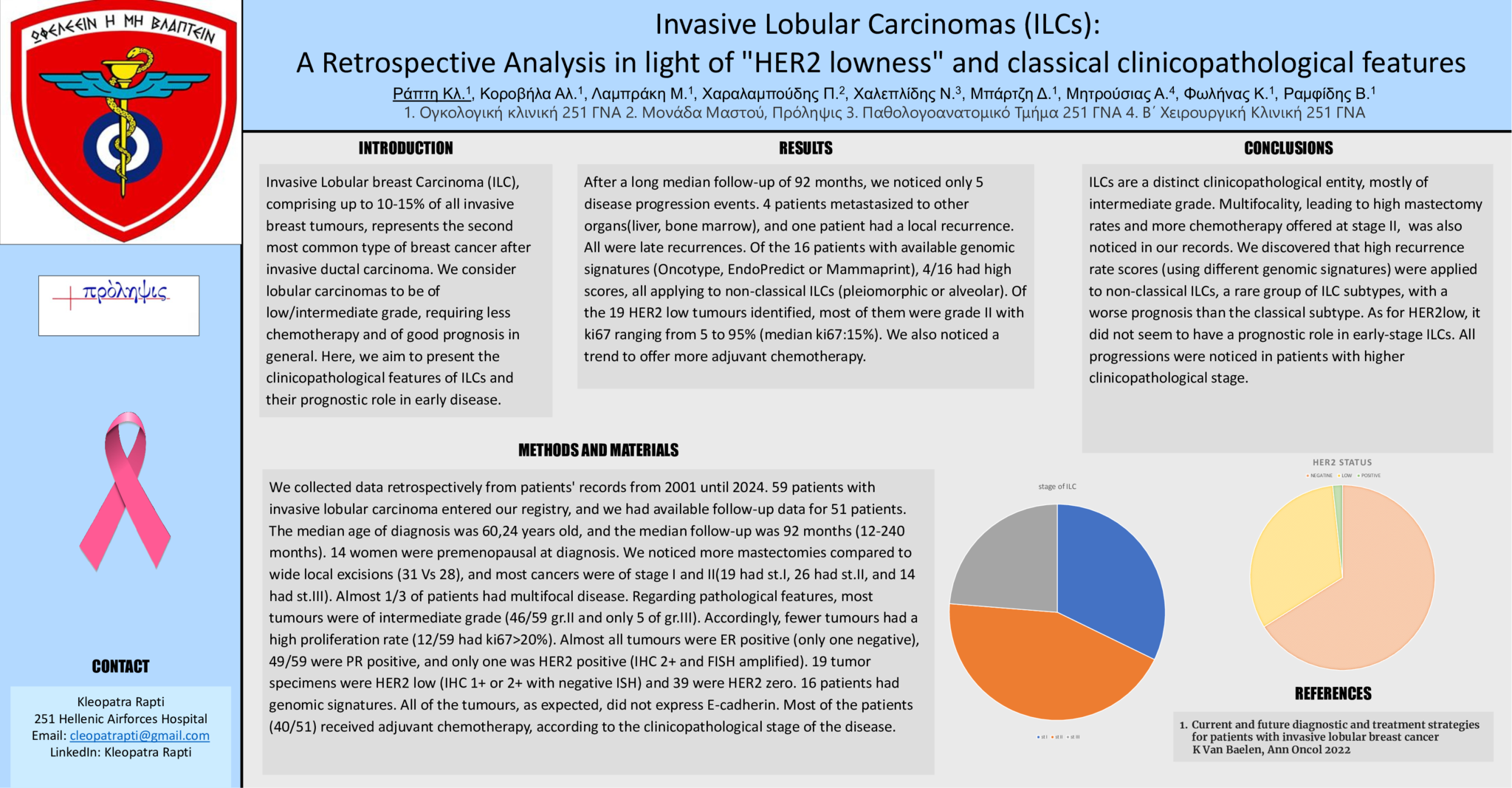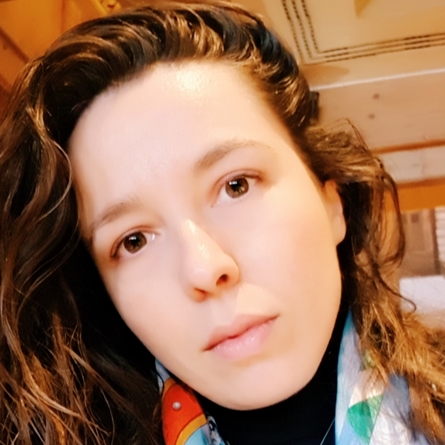Background: Invasive Lobular breast Carcinoma (ILC), comprising up to 10-15% of all invasive breast tumours, represents the second most common type of breast cancer after invasive ductal carcinoma. We consider lobular carcinomas to be of low/intermediate grade, requiring less chemotherapy and of good prognosis in general. Here, we aim to present the clinicopathological features of ILCs and their prognostic role in early disease. Methods: We collected data retrospectively from patients' records from 2001 until 2024. 59 patients with invasive lobular carcinoma entered our registry, and we had available follow-up data for 51 patients. The median age of diagnosis was 60,24 years old, and the median follow-up was 92 months (12-240 months). 14 women were premenopausal at diagnosis. We noticed more mastectomies compared to wide local excisions (31 Vs 28), and most cancers were of stage I and II(19 had st.I, 26 had st.II, and 14 had st.III). Almost 1/3 of patients had multifocal disease. Regarding pathological features, most tumours were of intermediate grade (46/59 gr.II and only 5 of gr.III). Accordingly, fewer tumours had a high proliferation rate (12/59 had ki67>20%). Almost all tumours were ER positive (only one negative), 49/59 were PR positive, and only one was HER2 positive (IHC 2+ and FISH amplified). 19 tumor specimens were HER2 low (IHC 1+ or 2+ with negative ISH) and 39 were HER2 zero. 16 patients had genomic signatures. All of the tumours, as expected, did not express E-cadherin. Most of the patients (40/19) received adjuvant chemotherapy, according to the clinicopathological stage of the disease. Results: After a long median follow-up of 92 months, we noticed only 5 disease progression events. 4 patients metastasized to other organs(liver, bone marrow), and one patient had a local recurrence. All were late recurrences. Of the 16 patients with available genomic signatures (Oncotype, EndoPredict or Mammaprint), 4/16 had high scores, all applying to non-classical ILCs (pleiomorphic or alveolar). Of the 19 HER2 low tumours identified, most of them were grade II with ki67 ranging from 5 to 95% (median ki67:15%). We also noticed a trend to offer more adjuvant chemotherapy. Conclusions: ILCs are a distinct clinicopathological entity, mostly of intermediate grade. Multifocality, leading to high mastectomy rates and more chemotherapy offered at stage II, was also noticed in our records. We discovered that high recurrence rate scores (using different genomic signatures) were applied to non-classical ILCs, a rare group of ILC subtypes, with a worse prognosis than the classical subtype. As for HER2low, it did not seem to have a prognostic role in early-stage ILCs. All progressions were noticed in patients with higher clinicopathological stage.
- 10 προβολές




